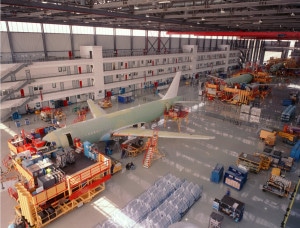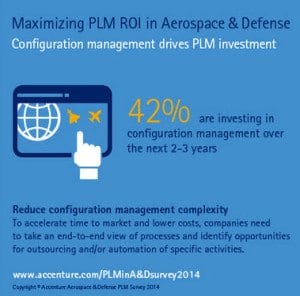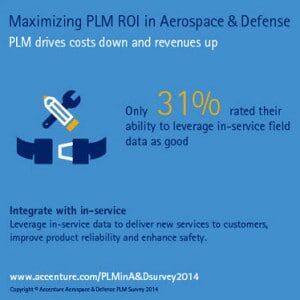
Accenture’s latest study of Product Lifecycle Management (PLM) adoption in aerospace and defense published this month shows how a strategic mindset about PLM is critical for getting long-term results. By concentrating on a more collaborative, integrated long-term PLM strategy across diverse departments, A&D manufacturers are reducing time-to-market, unnecessary costs and increase quality. The study also shows the rapid adoption of analytics and business intelligence, which are the cornerstones of manufacturing intelligence, in the enterprise.
Completed between January and March, 2014, the Accenture Product Lifecycle Management Survey 2014 in Aerospace & Defense study is based on interviews with 31 companies headquartered in eight nations. Accenture defined its respondent base as companies who manufacture products and provide services for commercial, military, engine manufacturing and defense electronics about their Product Lifecycle Management strategies and capabilities. The specifics of their methodology can be found at the bottom of this page of their website.
Key Take-Aways
• 84% of C-level executives see opportunities for improving their businesses by boosting collaboration including clarity of communication between services and design engineering. Nine in ten executives see immediate programs they could implement to enable greater levels of interdepartmental and interdivisional collaboration. 79% of manufacturers say they would benefit by improving their engineering and manufacturing design collaboration with suppliers using product lifecycle management (PLM) processes.
• 65% of respondents have plans for broadening their use of analytics and business intelligence (BI) capabilities to maximum PLM’s corporate-wide benefits. Respondents are looking to analytics and BI to find new revenue streams and gain greater insights into operational performance. The following infographic from the report illustrates this point.

• 42% of respondents are investing in configuration management over the next 2 – 3 years to reduce complexity and improve time-to-market. The following infographic from the report illustrates this point.

• 31% of executives rate their ability to leverage in-field service data as good. Executives see significant upside potential for using in-service data to deliver new services to customers, improve product reliability and enhance safety. The following graphic illustrates this point.

• 21% of executives give themselves a “good” rating for design collaboration with suppliers using PLM — the highest possible rating. The PLM challenges cited most for engineering and design functions were the absence of a single system of record (45%) and lack of integration between different engineering functions (39%).
• PLM is most often used in engineering, supply chain, manufacturing, services, and marketing functions. The most-relied PLM strategies focusing on accelerating product deliveries, improving global collaboration among suppliers, and more effectively integrating manufacturing and servicing within product engineering.